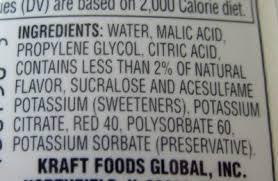We’ve all done it: you go to the store with the best intentions, but come home with Bagel Bites and Dr. Pepper. Use these tips for a healthier shopping experience.
- Don’t go shopping on an empty stomach. You’d be surprised how much of a difference this makes. According to Alison Jing Xu of the University of Minnesota, hunger “is likely to activate general concepts and behavioral knowledge associated with acquisition.” Believe it or not the study showed that shopping hungry could even lead to more non-food purchases as well. Not only will you likely come home with more than you intended, it probably won’t be the best quality food, either.
- Go with a list- and don’t deviate. Completely plan your shopping list before you go. Plan all your meals for the week in advance, write down all the ingredients you need, and vow that you will not deviate from your list. The only exception to this is if you forget to put a healthy/stock item on the list- like milk or water. Making a list in advance holds you accountable and allows you to enter the store with a plan, making it harder to deviate or end up with random junk thrown in your basket once you get to the register.
- Buy organic when possible. Organic meats and veggies typically contain fewer pesticides, few artificial ingredients, and fewer antibiotics in the case of meat. There is no debating that organic food is more expensive, so spend your organic dollars wisely. For produce, buy organic if you will be eating the skin- so strawberries, apples, peppers, etc. It is not as imperative for things like a banana or orange, since you won’t be eating the skin. EWG’s Shoppers Guide to Pesticides in Produce offers two lists, The Clean 15, and the Dirty Dozen, which indicate which produce items are a priority for buying organic. Find the list here.
- Look at product labels. You would be amazed at the product labels on some boxed goods- when you can only pronounce 3% of the ingredients, it is a good indication that you should put it right back on the shelf. If you are wanting to eat “clean” the general rule of thumb is that there shouldn’t be more than 5 ingredients. If you don’t wish to go that extreme, try to buy items you can pronounce most of the ingredients. Avoid foods with high fructose corn syrup, as it has recently been linked to Alzheimer’s and other degenerative brain diseases. Try to find boxed goods that say “no artificial ingredients or colors” on the front of the box, as these will likely be healthier options than the alternatives. Generally speaking, don’t buy foods that look like this:

It lists ingredients as a “preservative,” which should be a red flag, as well as containing “RED 40.” Anything that lists a color and a number is a no no- it is an artificial dye and should be avoided.
5. Shop Colorful. Buy produce in a variety of colors, as foods of different colors typically contain different nutrients. For example, red produce tends to contain high levels of lycopene, an antioxidant, while orange produce contains high levels of beta-carotene, which the body can then convert into Vitamin A.
6. That list we mentioned? Add a treat to it. No one can be absolutely perfect with their diet, and trying to be can often lead to binge eating once you get to the point of utter deprivation. So, rather than being perfect for a week, just to eat a tub of Ben and Jerry’s because you’re desperate for something that isn’t green, allow yourself a treat- A TREAT. You definitely don’t want to fill your cart with junk, but it is perfectly okay to allow yourself a “cheat” item for the week. Still try to follow the above guidelines for not buying something with an ingredients list longer than your favorite book.
A very, very large chunk of eating healthy depends on your willpower at the grocery store- if it makes it’s way into your home, you will eat it. So, nip those unhealthy habits in the bud with these 6 tips!
Leave a Reply
You must be logged in to post a comment.